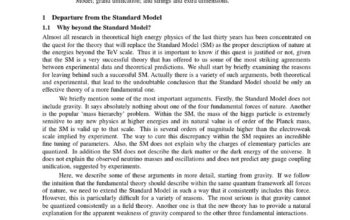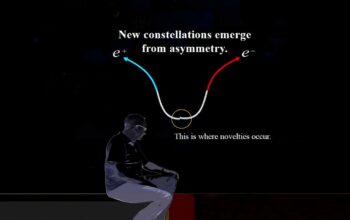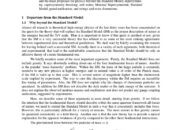In the grand tapestry of the cosmos, the spectacle of celestial bodies colliding, colluding, and coalescing mirrors the complexity of human emotion and ambition. Among the myriad astronomical phenomena, the binary star system has perpetually intrigued astronomers, representing not merely two stars cohabitating in the vastness of space but a profound interplay of gravitational forces. Recently, a binary star system has shattered previous speed records, showcasing a dizzying ballet of stellar sprinting that challenges our fundamental understanding of stellar dynamics.
The binary star system in question exhibits an extraordinary velocity, racing through the galactic medium at a staggering pace. This unprecedented speed, surpassing expectations, establishes new paradigms by which we can measure stellar motion and interactions. In astrological terms, it illustrates the complexities of gravitational binding and the intricate dance of foresight, force, and phenomenal physics governing such celestial bodies. The stars, entwined as they are, evoke the elegance of a cosmic pas de deux—whereupon one star’s acceleration directly influences its partner, culminating in a melodious yet chaotic interplay of orbital mechanics.
At the heart of this phenomenon lies the fundamental nature of binary stars, which are defined by their gravitational bound orbits around a common center of mass. This dual stellar system operates with the precision of a finely tuned orchestra, where each performer must calculate not only their own movements but also acutely anticipate the actions of their companion. As one star siphons away mass from its partner in the throes of accretion, the dynamics shift, potentially unleashing bursts of energy that propel the system to celestial speeds hitherto unrecorded.
The discovery of the binary star racing at unprecedented velocities introduces a myriad of questions that scratch beneath the surface of our understanding. Such rapid motion begs the inquiry: What series of evolutionary steps led these celestial bodies to attain such a remarkable rate? To contemplate their journey through time and space is to dissect the layers of stellar evolution, phenomena including mass loss, angular momentum transfer, and gravitational interactions. As these stars interact, the resultant forces can lead to dramatic changes: mergers, supernovae, or the emergence of exotic stellar remnants such as neutron stars or black holes.
As researchers observed the intricacies of this stellar performance, they found themselves emulating the role of astronomers of yore—navigating their tools and telescopes as one might wield a brush against a canvas. Each marker of data collected forms the basis of a tapestry woven from the threads of light and motion emanating from these cosmic entities. The new speed record established by this binary system only strengthens the argument for re-evaluating the pivotal role of these dueling giants in the celestial hierarchy.
In astrophysics, the enigmatic nature of elliptical orbits cannot be understated. The eccentricities of the binary stars might serve as a vessel of spectacle itself, inviting parallel interpretations of chaos and order. As these stars spiral toward one another, their interaction amplifies, creating waves of gravitational ripples that resonate through the fabric of space-time. These gravitational waves, once the stuff of theoretical musings, are tangible evidence of the unfathomable dynamics at play—an echo of a more primordial struggle between mass and energy, a testament to the sublime forces sculpting our universe.
A broader contemplation emerges when contextualizing this binary star discovery within the grand scheme of cosmic evolution. Stars are the elemental building blocks of galaxies, and their interaction could provide insights into the genesis of complex structures, such as planetary systems and even life itself. The notion of speed brings with it resonances of change—a transformation that reverberates throughout the cosmos. It encourages further exploration into how these rapid celestial navigators impact their surrounding environment, including the effects on nearby stars and interstellar matter. The expansive repulsion of kinetic energy is mirrored with the potential of stellar feedback processes, wherein mass and velocity catalyze new chemical compositions necessary for the birth of planets.
In addition, the unique nature of this binary star system accentuates the impressive methodological advancements in observational technology. The implications of studying such stellar phenomena extend beyond academic curiosity; they serve as a gateway to understanding fundamental principles of astrophysics. The ability to observe, measure, and interpret data from these rapidly moving stars invokes a sense of exhilarating urgency. Each observer thus assumes the mantle of a cosmic detective, sifting through data and searching for the once ephemeral breadcrumbs left in the wake of stellar pathfinding.
As this binary star system accelerates, the narrative unfolding within celestial realms transcends mere science. It enriches our collective consciousness and provides an apt metaphor for the intricacies of life and human experience. Speed, energy, and transformation are fundamental pillars that underline existence, resonating through personal and cosmic narratives alike. The exploration of this astronomical phenomenon allows for reflections on our own trajectories, borne out of forces unseen yet felt, forever stretching toward the infinite.
Ultimately, the record-breaking velocity of this binary star system acts as both an emblem of scientific achievement and a reminder of the boundless mysteries that continue to pervade our universe. Emboldened by curiosity, humanity shall forever gaze upwards, seeking to decode the language of stars and the stories they tell through their extraordinary movement across the fabric of time and space.












